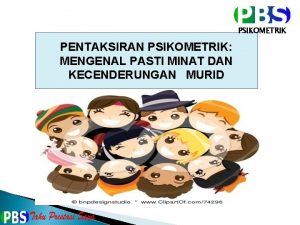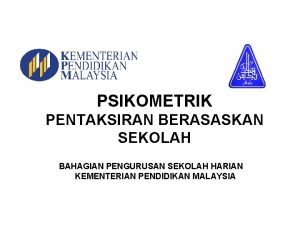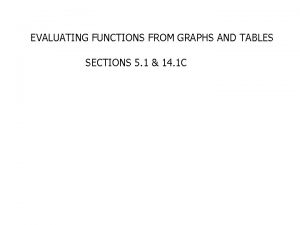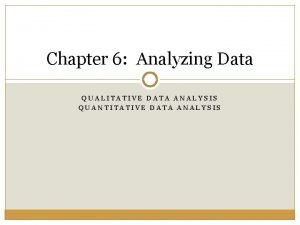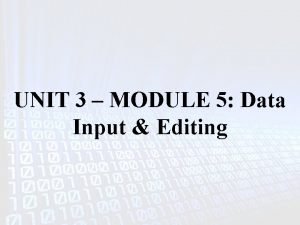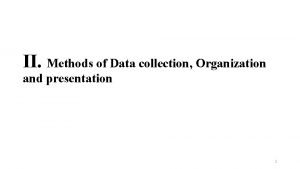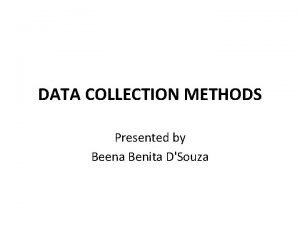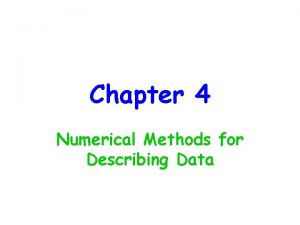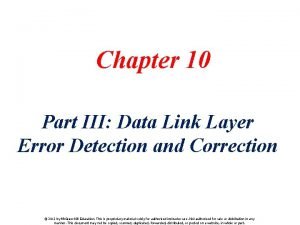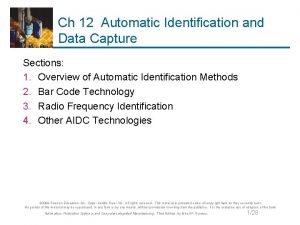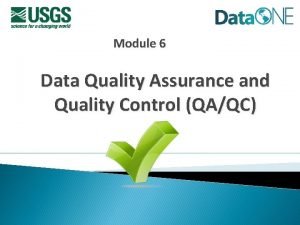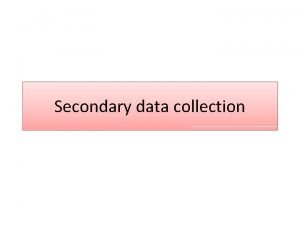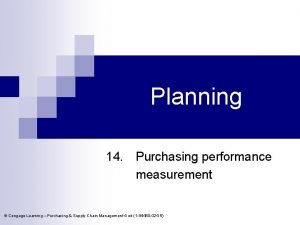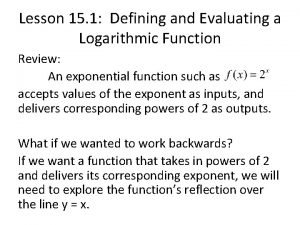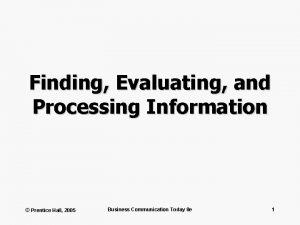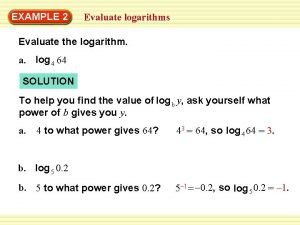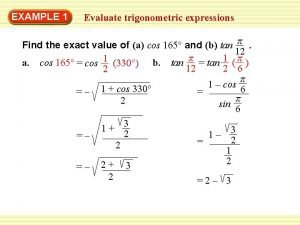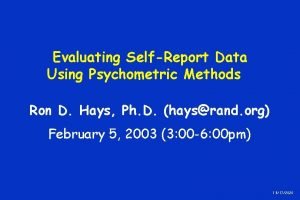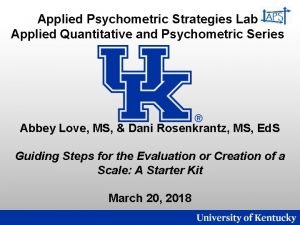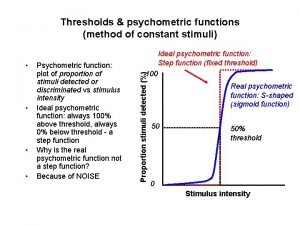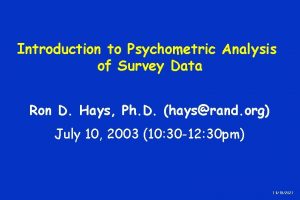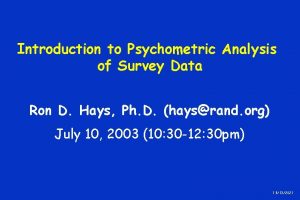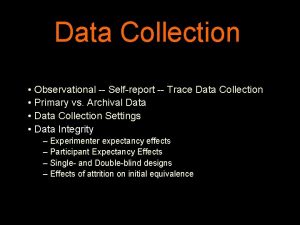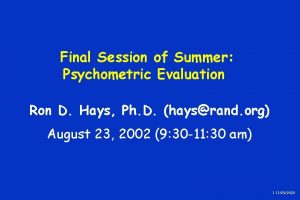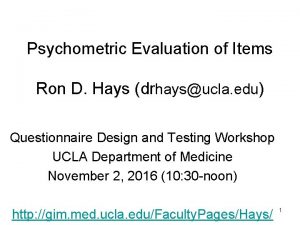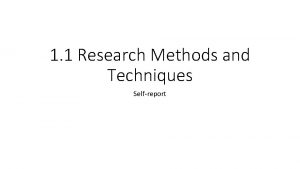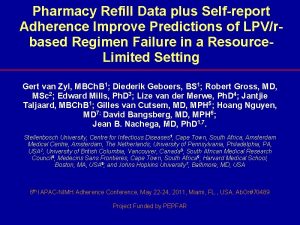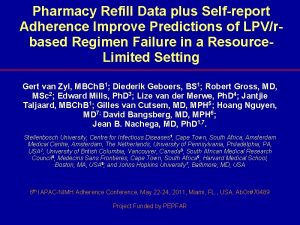Evaluating SelfReport Data Using Psychometric Methods Ron D






![Reliable Change Index • (X 2 – X 1)/ (SEM * SQRT [2]) • Reliable Change Index • (X 2 – X 1)/ (SEM * SQRT [2]) •](https://slidetodoc.com/presentation_image/26a3c5e58b41e6974bfc3bc4852d658d/image-7.jpg)
















































- Slides: 55

Evaluating Self-Report Data Using Psychometric Methods Ron D. Hays, Ph. D (hays@rand. org) February 8, 2006 (3: 00 -6: 00 pm) HS 249 F

Individual Change • Interest in knowing how many patients benefit from group intervention or • Tracking progress on individual patients • Sample – 54 patients – Average = 56; 84% white; 58% female • Method – Self-administered SF-36 version 2 at baseline and about at end of therapy (about 6 weeks later). HEALTH

Physical Functioning and Emotional Well-Being at Baseline for 54 Patients at UCLA-Center for East West Medicine HEALTH Hays et al. (2000), American Journal of Medicine

Change in SF-36 Scores Over Time Effect Size 0. 13 HEALTH 0. 35 0. 21 0. 53 0. 36 0. 11 0. 41 0. 24 0. 30

t-test for within group change • XD/(SDd/n ½) XD = is mean difference, SDd = standard deviation of difference HEALTH

Significance of Group Change HEALTH Delta t-test prob. PF-10 1. 7 2. 38 . 0208 RP-4 4. 1 3. 81 . 0004 BP-2 3. 6 2. 59 . 0125 GH-5 2. 4 2. 86 . 0061 EN-4 5. 1 4. 33 . 0001 SF-2 4. 7 3. 51 . 0009 RE-3 1. 5 0. 96 . 3400 <- EWB-5 4. 3 3. 20 . 0023 PCS 2. 8 3. 23 . 0021 MCS 3. 9 2. 82 . 0067
![Reliable Change Index X 2 X 1 SEM SQRT 2 Reliable Change Index • (X 2 – X 1)/ (SEM * SQRT [2]) •](https://slidetodoc.com/presentation_image/26a3c5e58b41e6974bfc3bc4852d658d/image-7.jpg)
Reliable Change Index • (X 2 – X 1)/ (SEM * SQRT [2]) • SEM = SDb * (1 - reliability)1/2 HEALTH

Amount of Change in Observed Score Needed for Significant Change RCI Effect size PF-10 8. 4 0. 67 RP-4 8. 4 0. 72 BP-2 10. 4 1. 01 GH-5 13. 0 1. 13 EN-4 12. 8 1. 33 SF-2 13. 8 1. 07 RE-3 9. 7 EWB-5 13. 4 0. 71 1. 26 PCS 7. 1 0. 62 MCS 9. 7 0. 73 HEALTH

Change for 54 Cases HEALTH % % Improving Declining Difference PF-10 13% 2% 11% RP-4 31% 2% 29% BP-2 22% 7% 15% GH-5 7% 0% 7% EN-4 9% 2% 7% SF-2 17% 4% 13% RE-3 15% 0% EWB-5 19% 4% 15% PCS 24% 7% 17% MCS 22% 11%

How Are Good Measures Developed? • Review literature • Expert input (patients and clinicians) • Define constructs you are interested in • Draft items (item generation) • Pretest – Cognitive interviews – Field and pilot testing • Revise and test again • Translate/harmonize across languages HEALTH

What’s a Good Measure? • Same person gets same score (reliability) • Different people get different scores (validity) • People get scores you expect (validity) • It is practical to use (feasibility) HEALTH

Scales of Measurement and Their Properties Property of Numbers Type of Scale Nominal Ordinal Interval Ratio HEALTH Rank Order Equal Interval Absolute 0 No Yes Yes No No No Yes

Measurement Range for Health Outcome Measures Nominal HEALTH Ordinal Interval Ratio

Indicators of Acceptability • Response rate • Administration time • Missing data (item, scale) HEALTH

Variability • All scale levels are represented • Distribution approximates bell-shaped "normal" HEALTH

Measurement Error observed = true + systematic + score error (bias) HEALTH random error

Four Types of Data Collection Errors • Coverage Error Does each person in population have an equal chance of selection? • Sampling Error Are only some members of the population sampled? • Nonresponse Error Do people in the sample who respond differ from those who do not? • Measurement Error Are inaccurate answers given to survey questions? HEALTH

Flavors of Reliability • Test-retest (administrations) • Intra-rater (raters) • Internal consistency (items) HEALTH

Test-retest Reliability of MMPI 317 -362 r = 0. 75 MMPI 317 True False True MMPI 362 169 15 184 False 21 95 116 190 110 I am more sensitive than most other people. HEALTH

Kappa Coefficient of Agreement (Corrects for Chance) kappa = HEALTH (observed - chance) (1 - chance)

Example of Computing KAPPA 1 4 2 1 1 2 2 3 2 2 4 5 Column Sum HEALTH 5 Row Sum 1 2 Rater B Rater A 3 1 3 2 2 2 10

Example of Computing KAPPA (Continued) Pc = (1 x 2) + (3 x 2) + (2 x 2) Pobs. = Kappa = HEALTH 9 10 (10 x 10) = 0. 90 - 0. 20 1 - 0. 20 = 0. 87 = 0. 20

Guidelines for Interpreting Kappa Conclusion Poor Kappa <. 40 Conclusion Poor Kappa < 0. 0 Fair . 40 -. 59 Slight . 00 -. 20 Good . 60 -. 74 Fair . 21 -. 40 Excellent >. 74 Moderate . 41 -. 60 Substantial . 61 -. 80 Almost perfect. 81 - 1. 00 Fleiss (1981) HEALTH Landis and Koch (1977)

Ratings of Height of Houseplants Baseline Height Plant A 1 A 2 B 1 B 2 C 1 HEALTH Follow-up Height Experimental Condition R 1 R 2 120 118 121 120 1 R 2 084 096 085 088 2 R 1 R 2 107 105 108 104 2 R 1 R 2 094 097 100 104 1 R 2 085 091 088 096 2

Ratings of Height of Houseplants (Cont. ) Baseline Height Plant C 2 D 1 D 2 E 1 E 2 HEALTH Follow-up Height Experimental Condition R 1 R 2 079 078 086 092 1 R 2 070 072 076 080 1 R 2 054 056 060 2 R 1 R 2 085 097 101 108 1 R 2 090 092 084 096 2

Reliability of Baseline Houseplant Ratings of Height of Plants: 10 plants, 2 raters Baseline Results Source Plants Within DF SS MS 9 5658 628. 667 10 177 17. 700 Raters 1 57. 800 Raters x Plants 9 119. 2 13. 244 Total HEALTH 19 5835 F 35. 52

Sources of Variance in Baseline Houseplant Height Source Plants (N) MS 9 628. 67 10 17. 70 (WMS) Raters (K) 1 57. 80 (JMS) Raters x Plants 9 13. 24 (EMS) Within Total HEALTH dfs 19 (BMS)

Intraclass Correlation and Reliability Model Reliability One-Way MS BMS - MS WMS MS BMS - MS MS BMS + Two-Way MS BMS Fixed MS BMS Two-Way N (MSBMS Random NMSBMS HEALTH Intraclass Correlation - MS EMS - MSEMS ) - MSEMS (K-1)MS WMS MSBMS - MS EMS MSEMS +MSJMS WMS + (K-1)MS EMS MSBMS MS BMS + (K-1)MS - MS EMS + K(MS JMS - MS EMS )/N

Summary of Reliability of Plant Ratings Baseline One-Way Anova 0. 97 Two-Way Random Effects 0. 97 Two-Way Fixed Effects 0. 98 Source Plants Within Raters X Plants HEALTH RTT 0. 97 0. 94 0. 98 0. 97 Label BMS WMS JMS EMS Follow-up RII 0. 95 RTT 0. 95 0. 96 Baseline MS 628. 667 17. 700 57. 800 13. 244 RII

Source Cronbach’s Alpha Respondents (BMS) Items (JMS) Resp. x Items (EMS) Total Alpha = HEALTH df SS MS 4 11. 6 0. 1 4. 4 2. 9 0. 1 1. 1 9 16. 1 2. 9 - 1. 1 = 1. 8 = 0. 62 2. 9

Alpha by Number of Items and Inter-item Correlations alphast = K HEALTH = _ K r _ 1 + (K - 1 ) r number of items in scale

Alpha for Different Numbers of Items and Homogeneity Average Inter-item Correlation ( r ) Number of Items (K) 2 4 6 8 HEALTH . 0. 000 . 2. 333. 500. 666 . 4 . 6 . 8 1. 0 . 572. 727. 800. 842 . 750. 857. 900. 924 . 889. 941. 960. 970 1. 000

Spearman-Brown Prophecy Formula alpha y = ( N • alpha x 1 + (N - 1) * alpha x ) N = how much longer scale y is than scale x HEALTH

Number of Items and Reliability for Three Versions of the Mental Health Inventory (MHI) HEALTH

Example Spearman-Brown Calculations MHI-18 18/32 (0. 98) (1+(18/32 – 1)*0. 98 = 0. 55125/0. 57125 = 0. 96 HEALTH

Reliability Minimum Standards • 0. 70 or above (for group comparisons) • 0. 90 or higher (for individual assessment) Ø SEM = SD (1 - reliability)1/2 HEALTH

Reliability of a Composite Score HEALTH

Hypothetical Multitrait/Multi-Item Correlation Matrix HEALTH

Multitrait/Multi-Item Correlation Matrix for Patient Satisfaction Ratings Technical 0. 67† 0. 54† 0. 41 0. 53 0. 60† 0. 58† Interpersonal 0. 28 0. 50† 0. 44† 0. 56† 0. 57† 0. 68* 0. 58* 0. 65* 0. 57* 0. 62* 0. 48* 0. 63† 0. 61† 0. 67† 0. 60† 0. 58† 0. 46† Interpersonal 1 0. 25 0. 26 0. 16 0. 23 0. 24 0. 18 0. 19 0. 32 0. 18 0. 24 Communication 0. 66* 2 Financial 0. 63† 0. 55* 30. 48* 40. 59* 50. 55* 60. 59* 10. 58 20. 59† 30. 62† 40. 53† 50. 54 60. 48† Note – Standard error of correlation is 0. 03. Technical = satisfaction with technical quality. Interpersonal = satisfaction with the interpersonal aspects. Communication = satisfaction with communication. Financial = satisfaction with financial arrangements. *Item-scale correlations for hypothesized scales (corrected for item overlap). †Correlation within two standard errors of the correlation of the item with its hypothesized scale. HEALTH

Construct Validity • Does measure relate to other measures in ways consistent with hypotheses? • Responsiveness to change including minimally important difference HEALTH

Construct Validity for Scales Measuring Physical Functioning Severity of Heart Disease Relative F-ratio Validity None Mild Severe Scale #1 91 90 87 2 --- Scale #2 88 78 74 10 5 Scale #3 95 87 77 20 10 HEALTH

Responsiveness to Change and Minimally Important Difference (MID) • HRQOL measures should be responsive to interventions that changes HRQOL • Need external indicators of change (Anchors) – mean change in HRQOL scores among people who have changed (“minimal” change for MID). HEALTH

Self-Report Indicator of Change • Overall has there been any change in your asthma since the beginning of the study? Much improved; Moderately improved; Minimally improved No change Much worse; Moderately worse; Minimally worse HEALTH

Clinical Indicator of Change – “changed” group = seizure free (100% reduction in seizure frequency) – “unchanged” group = <50% change in seizure frequency HEALTH

Responsiveness Indices (1) Effect size (ES) = D/SD (2) Standardized Response Mean (SRM) = D/SD† (3) Guyatt responsiveness statistic (RS) = D/SD‡ D SD SD† SD‡ HEALTH = raw score change in “changed” group; = baseline SD; = SD of D among “unchanged”

Effect Size Benchmarks • Small: 0. 20 ->0. 49 • Moderate: 0. 50 ->0. 79 • Large: 0. 80 or above HEALTH

Treatment Impact on PCS HEALTH

Treatment Impact on MCS HEALTH

IRT HEALTH

Latent Trait and Item Responses Item 1 Response Latent Trait Item 2 Response Item 3 Response HEALTH P(X 1=1) P(X 1=0) 1 0 P(X 2=1) P(X 2=0) 1 0 P(X 3=0) 0 P(X 3=1) P(X 3=2) 1 2

Item Responses and Trait Levels Person 1 Item 1 HEALTH Person 2 Item 2 Person 3 Item 3 Trait Continuum

Prob. of “Yes” Item Characteristic Curves (1 -Parameter Model) HEALTH

Item Characteristic Curves (2 -Parameter Model) HEALTH

Dichotomous Items Showing DIF (2 -Parameter Model) Hispanics Whites DIF – Location (Item 1) DIF – Slope (Item 2) Hispanics Whites HEALTH

HEALTH
 Charles spearman g factor
Charles spearman g factor Introduction to psychometric
Introduction to psychometric Engineering psychometric test
Engineering psychometric test Sales psychometric test
Sales psychometric test Psychometric approach to intelligence
Psychometric approach to intelligence Psychometric tests
Psychometric tests 4 jenis resilien
4 jenis resilien Ppsi tingkatan 3
Ppsi tingkatan 3 Judgement questions examples
Judgement questions examples Psychometric testing
Psychometric testing Huff's law of shopper attraction
Huff's law of shopper attraction Hayden smith and thomas nagel
Hayden smith and thomas nagel Evaluating composite functions using tables
Evaluating composite functions using tables Indirect methods of contoring uses how many methods
Indirect methods of contoring uses how many methods Criteria for evaluating secondary data
Criteria for evaluating secondary data Advantages of secondary data
Advantages of secondary data Using risk to balance agile and plan driven methods
Using risk to balance agile and plan driven methods Bluetooth positioning using rssi and triangulation methods
Bluetooth positioning using rssi and triangulation methods The iac must ensure custody of air cargo using what methods
The iac must ensure custody of air cargo using what methods Using system.collections
Using system.collections Dtfd switch
Dtfd switch Data capture method
Data capture method Data analysis methods
Data analysis methods Automatic data capture
Automatic data capture Input and output form design
Input and output form design Types of data collection methods
Types of data collection methods Nat 5 pe
Nat 5 pe Methods of data collection in legal research
Methods of data collection in legal research Observational data collection methods
Observational data collection methods Data input methods
Data input methods Data collection organization and presentation
Data collection organization and presentation Data cube computation
Data cube computation Methods to avoid false discoveries in data mining
Methods to avoid false discoveries in data mining Observation methods of data collection
Observation methods of data collection Numerical methods for describing data
Numerical methods for describing data Block coding in data link layer
Block coding in data link layer Automatic identification and data capture pdf
Automatic identification and data capture pdf Binning techniques in data mining
Binning techniques in data mining Qc definition
Qc definition Data collection procedure example
Data collection procedure example Automated data collection methods
Automated data collection methods Cycle of analysis
Cycle of analysis Writing and evaluating expressions
Writing and evaluating expressions Radical to fractional exponent
Radical to fractional exponent Purchasing performance evaluation
Purchasing performance evaluation 15.1 defining and evaluating a logarithmic function
15.1 defining and evaluating a logarithmic function Evaluating trading strategy
Evaluating trading strategy Evaluate 32 3/5
Evaluate 32 3/5 Finding evaluating and processing information
Finding evaluating and processing information Logarithm examples
Logarithm examples How to evaluate trigonometric expressions
How to evaluate trigonometric expressions Evaluating selection techniques and decisions
Evaluating selection techniques and decisions Evaluating sales performance
Evaluating sales performance Evaluation of materials books
Evaluation of materials books I can evaluate functions
I can evaluate functions Evaluating company resources and competitive capabilities
Evaluating company resources and competitive capabilities






